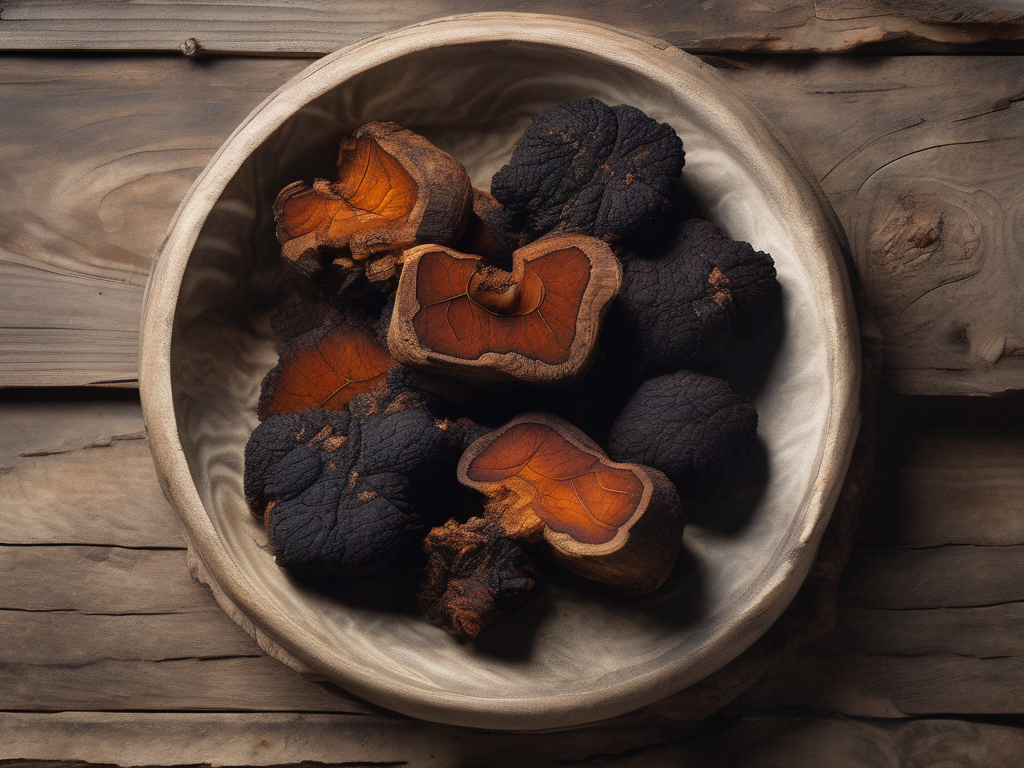
Signs that Chaga Mushroom has Gone Bad and is Unsafe to Eat
Get Your Free Food Safety Cheat Sheet
30 most common foods with instant answers. Print it and stick it on your fridge—completely free!
Signs that Chaga Mushroom has Gone Bad and is Unsafe to Eat
Chaga mushrooms, scientifically known as Inonotus obliquus, are a type of fungus that grows on birch trees in colder regions. They have gained popularity in recent years due to their potential health benefits, including antioxidant and anti-inflammatory properties. However, like any other food product, chaga mushrooms can go bad over time, potentially posing health risks if consumed. In this blog post, we will discuss the signs that chaga mushroom has gone bad and is no longer safe to eat. (Chaga mushroom)
Understanding Chaga Mushroom Spoilage
Chaga mushrooms are typically dried and ground into a powder for consumption or brewed into a tea. When stored properly in a cool, dry place, chaga mushrooms can have a long shelf life. However, exposure to moisture, heat, or contaminants can cause them to spoil. It is essential to be aware of the signs of spoilage to prevent consuming rancid or contaminated chaga mushrooms.
Signs that Chaga Mushroom has Gone Bad
-
Visible Mold Growth: One of the most obvious signs that chaga mushroom has spoiled is the presence of mold. Mold can appear as fuzzy patches or spots on the surface of the mushroom. If you notice any mold growth, it is crucial to discard the chaga mushroom immediately.
-
Unpleasant Odor: Fresh chaga mushrooms have a mild, earthy aroma. If you detect a foul or sour smell coming from the mushroom, it is likely spoiled. Trust your sense of smell and avoid consuming chaga mushrooms that have an off-putting odor.
-
Changes in Color: Healthy chaga mushrooms have a dark, blackened exterior. If you notice any discoloration, such as a reddish or greenish tint, it may indicate spoilage. Discolored chaga mushrooms should be discarded.
-
Slimy Texture: Spoiled chaga mushrooms may develop a slimy or mushy texture, indicating bacterial growth. If the mushroom feels slimy to the touch or appears excessively soft, it is best to err on the side of caution and avoid consuming it.
-
Bitter Taste: While chaga mushrooms have a slightly bitter taste, spoiled mushrooms may have an intensified bitter flavor or an unpleasant taste. If the mushroom tastes significantly different from what you are accustomed to, it may be a sign of spoilage.
Proper Storage Practices for Chaga Mushrooms
To extend the shelf life of chaga mushrooms and prevent spoilage, follow these essential storage tips:
- Store dried chaga mushrooms in an airtight container in a cool, dark place away from moisture and heat.
- Avoid exposing chaga mushrooms to direct sunlight, as UV rays can degrade their quality.
- Check the container regularly for signs of mold or moisture, and discard any contaminated mushrooms.
- Consider freezing chaga mushrooms for long-term storage, ensuring they are properly sealed to prevent freezer burn.
By following proper storage practices and being vigilant for signs of spoilage, you can enjoy the benefits of chaga mushrooms safely.
Conclusion
In conclusion, chaga mushrooms are a valuable source of nutrients and potential health benefits. However, it is essential to be aware of the signs that indicate spoilage to avoid consuming unsafe mushrooms. Mold growth, unpleasant odor, changes in color, slimy texture, and bitter taste are key indicators that chaga mushroom has gone bad and should be discarded. By practicing proper storage techniques and promptly identifying spoilage signs, you can ensure the safety and quality of your chaga mushrooms. Stay informed, stay safe, and enjoy the benefits of this unique fungus responsibly. (Chaga mushroom)
Authoritative Food Safety References
These agencies and university labs inform every tip and health precaution we publish.
USDA FoodKeeper – Cold Storage Guidelines
Official refrigerator, freezer, and pantry timelines maintained by the U.S. Department of Agriculture.
Visit USDA FoodKeeperFDA Produce Safety Rule & Grower Guidance
Field-to-fridge handling practices that prevent contamination of fruits, vegetables, and leafy greens.
Visit FDA Produce SafetyCDC Foodborne Illness Prevention Hub
Surveillance-backed guidance on pathogens, symptoms, and steps to reduce foodborne illness risk.
Visit CDC Food SafetyUC Davis Postharvest Technology Center
University research detailing optimal storage atmospheres for produce after harvest.
Visit UC Davis PostharvestPenn State Extension – Home Food Preservation & Safety
Peer-reviewed extension bulletins on safe canning, chilling, and reheating practices.
Visit Penn State ExtensionGet Your Free Food Safety Cheat Sheet
30 most common foods with instant answers. Print it and stick it on your fridge—completely free! Want more? Upgrade to the complete guide with 70+ foods.
Scan your food directly and get instant safety info using our AI-powered camera feature.